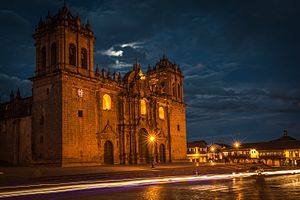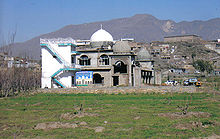
Cusco or Cuzco is a city in southeastern Peru near the Sacred Valley of the Andes mountain range and the Huatanay river. It is the capital of the Department of Cusco and of the Cusco Province. The city is the seventh most populous in Peru; in 2017, it had a population of 428,450. Its elevation is around 3,400 m (11,200 ft).

The Viceroyalty of Peru, officially known as the Kingdom of Peru, was a Spanish imperial provincial administrative district, created in 1542, that originally contained modern-day Peru and most of the Spanish Empire in South America, governed from the capital of Lima. Peru was one of the two Spanish viceroyalties in the Americas from the sixteenth to the eighteenth centuries.

Christianity is the predominant religion in the Philippines, with Roman Catholicism being its largest denomination. Sizeable minorities adhering to Islam, Dharmic religions, and indigenous Philippine folk religions are also present.

The predominant religion in Brazil is Christianity, with Catholicism being its largest denomination.
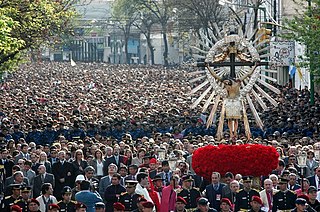
Christianity is the most widely professed religion in Argentina, with Roman Catholicism being its largest denomination. This historical background is very much due to the Spanish influence brought about through the newly conquered territories. However, affiliation with Protestant churches is increasing and immigration throughout the 20th century has brought other religions from various regions to Argentina.

Christianity is the predominant religion in Bolivia, with Roman Catholicism being its largest denomination. Before the arrival of Spanish missionaries, the people residing in the territory of modern day Bolivia practiced a variety of faiths.

Christianity is the predominant religion in Mexico, with Catholicism being its largest denomination representing around 78% of the total population as of 2020. In recent decades the share of Catholics has been declining, due to the growth of other Christian denominations – especially various Protestant churches, Jehovah's Witness and Mormonism – which now constitute larger shares of the population. Conversion to non-Catholic denominations has been considerably lower than in Central America, and central Mexico remains one of the most Catholic areas in the world.

Francisco Álvarez de Toledo, also known as The Viceroyal Solon, was an aristocrat and soldier of the Kingdom of Spain and the fifth Viceroy of Peru. Often regarded as the "best of Peru's viceroys", he is as often denounced for the negative impact his administration had on the Indigenous peoples of Peru.

The Comentarios Reales de los Incas is a book written by Inca Garcilaso de la Vega, the first published mestizo writer of colonial Andean South America. The Comentarios Reales de los Incas is considered by most to be the unquestioned masterpiece of Inca Garcilaso de la Vega, born of the first generation after the Spanish conquest.

Christianity has dominated Guatemalan society since its Spanish colonial rule, but the nature of Christian practice in the country has changed in recent decades.

The demographic history of Peru shows the structure of the population in different historical periods. Peru’s population drastically increased in the 1900s, with a diverse range of ethnic divisions living in the country. Lima is its capital city situated along the Pacific Ocean coast, where most of its population lives, and its population size is around 9.75 million. Major cities are located near the coastal areas of Peru. In terms of population and area size, it is the fourth and third largest country in South America, a place where the ancestral transcends and all forms of art combine. Peru became an independent country on July 28, 1821. However, Peru did not have a proper national census until 1876, more than a half-century after independence. They took the data before the federal census through different mediums but not on a national level. The significant migration in Peru consisted of Indigenous people, Europeans, enslaved Africans, and Asians; Spaniards were the first European who came to Peru, arrived in 1531, and discovered the Inca culture. The Incas established pre-Columbian America's greatest and most advanced kingdom and monarchy. However, native Americans were still in a larger proportion to total population.

The Cusco School or Cuzco School, was a Roman Catholic artistic tradition based in Cusco, Peru during the Colonial period, in the 16th, 17th and 18th centuries. It was not limited to Cusco only, but spread to other cities in the Andes, as well as to present day Ecuador and Bolivia.
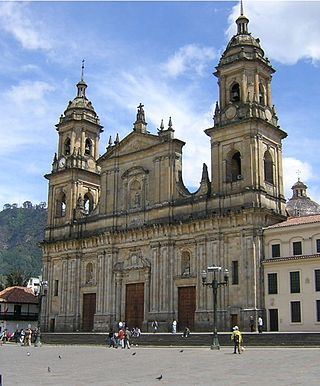
Religion in Colombia is dominated by various branches of Christianity and is an expression of the different influences in the Colombian culture including the Spanish, the Native Amerindian and the Afro-Colombian, among others.
Religion in South America has been a major influence on art, culture, philosophy and law and changed greatly in recent years. Roman Catholicism has rapidly declined. Most of this is due to the growth of Protestantism, particularly evangelical Christians. A smaller number of South Americans are also beginning to identify as irreligious. Sizeable adherents of other religions are also present, including of various indigenous religions.

Christianity is the most widely professed religion in Chile, with Catholicism being its largest denomination. The country is secular and the freedom of religion is established under its Constitution.
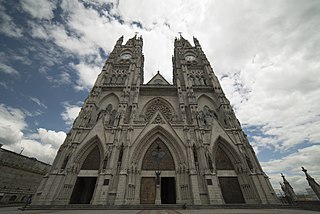
When it comes to religion, the Ecuadorian society is relatively homogeneous, with Christianity being the primary religion. Catholicism is the main Christian denomination in the country. There are also small minorities of other religions.

Christianity is the predominant religion in Costa Rica, with Catholicism being its largest denomination. Catholicism is also the state religion, but the government generally upholds people's religious freedom in practice.
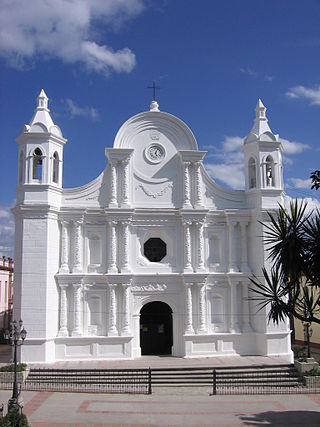
The predominant religion in Honduras is Christianity, with Catholicism and Evangelicalism being its main denominations. The country is secular and the freedom of religion is enshrined in the nation's constitution.

The Peruvian colonial architecture, developed in the Viceroyalty of Peru between the 16th and 19th centuries, was characterized by the importation and adaptation of European architectural styles to the Peruvian reality, yielding an original architecture.

